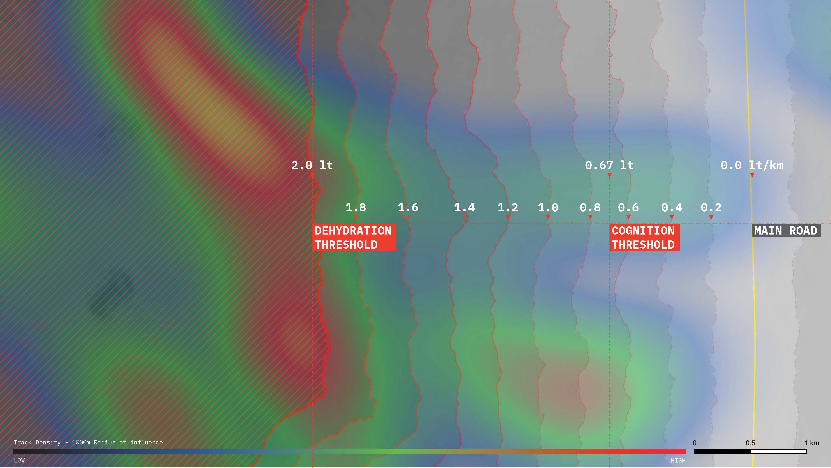Border Forensics develops new geospatial methods of analysis to measure the impact of increased border control on the risks faced by migrants crossing Niger’s Sahara desert

(Geneva, May 08, 2023) – A law on the “Illegal Trafficking of Migrants” passed in Niger in 2015 and implemented thereafter with the fundamental support of European states, institutions and agencies, has led to a humanitarian crisis for migrants and Nigeriens seeking to cross the desert. The investigation published today by Border Forensics relies on innovative methods of geospatial analysis to generate new evidence of the way these policies and practices have increased the risk of loss of life.
In the aim of thwarting migration across Northern Niger to Libya, the Nigerien government and European authorities have criminalised migrant services providers (transporters, hosts, brokers, etc.), who had until then constituted a vital cross-Saharan infrastructure of mobility, and established new forms of border controls. These have not stopped mobility in the region but have rather forced drivers’ trajectories into more remote areas of the desert, creating dangerous and often fatal conditions when a vehicle breaks down or drivers abandon their passengers and flee to avoid apprehension.
Because of the law’s harsh penalties and increased border control, cross-Saharan movements in Northern Niger have been forced underground. As a result, the true scale of migrant deaths across the desert is unknown. To make up for this lack of reliable data and contribute to a better empirical analysis of the lethal effects of the 2015-36 law, we had to develop new methods of geospatial analysis, drawing in part also on the work of activists and researchers who have documented migrants’ deaths in the Sonoran desert at the US-Mexico border.”
Tara Plath, Lead investigator
Border Forensics’ investigation mobilizes these ground-breaking geospatial and remote sensing methodologies to investigate the relation between bordering practices, spatial shifts in migrant trajectories and increased danger of crossing of Niger’s Sahara desert.
The report applies these methods to a multi-sited case study along a section of the route connecting Agadez, in Northern Niger, with Sabha, in Libya: the civilian town of Séguédine, the military outpost of Madama, and the Toummo checkpoint at the Niger-Libyan border. Border Forensics’ analysis of each site reveals a clear pattern that links increased border control and shifts in migrants’ trajectories, leading to the latter moving deeper into the desert, where chances of survival are greatly diminished in the recurring events of vehicle failures, abandonment, or running out of water. The investigation makes the increased danger encountered by migrants visible and measurable in terms of one of the greatest risks faced in these cross-Saharan journeys: a life-threatening state of dehydration in less traveled and less visible areas. The correlation observed between the level of invisibility of alternative tracks used by migrants to avoid border control and the level of potential danger encountered along these post-2015 tracks suggests a causal relationship.
Beyond the tragic loss of life, Law 2015-36 has had other harmful effects and contributes to undermine the social, economic, and political fabric of affected communities in Niger and beyond. It has impacted the livelihoods of the local population by jeopardizing their economic stability and well-being, while restricting the mobility within Niger of citizens of the Economic Community of West African States, who according to regional agreements should instead be granted freedom of movement and the right to reside and settle in Niger. This evidence may support calls for increased accountability of all actors participating in border management, in particular the Nigerien government, the EU, and its Member States, as well as UN agencies.
“All actors – whether from Niger, Europe, UN agencies and other –- involved in the drafting and implementation of the law should be held to account for the increased deaths and suffering of migrants it has caused. The government of Niger should end the criminalization of the many actors who transport and interact with migrants, while the European Union, its agencies and member states should immediately stop supporting harmful migration policies in Niger and beyond through the externalization of border control.”
Rhoumour Ahmet Tchilouta, Lead investigator
The report “Mission Accomplished? The Deadly Effects of Border Control in Niger” is published on the 8th of May at www.borderforensics.org/investigations/niger-investigation/
For any questions please contact press@borderforensics.org